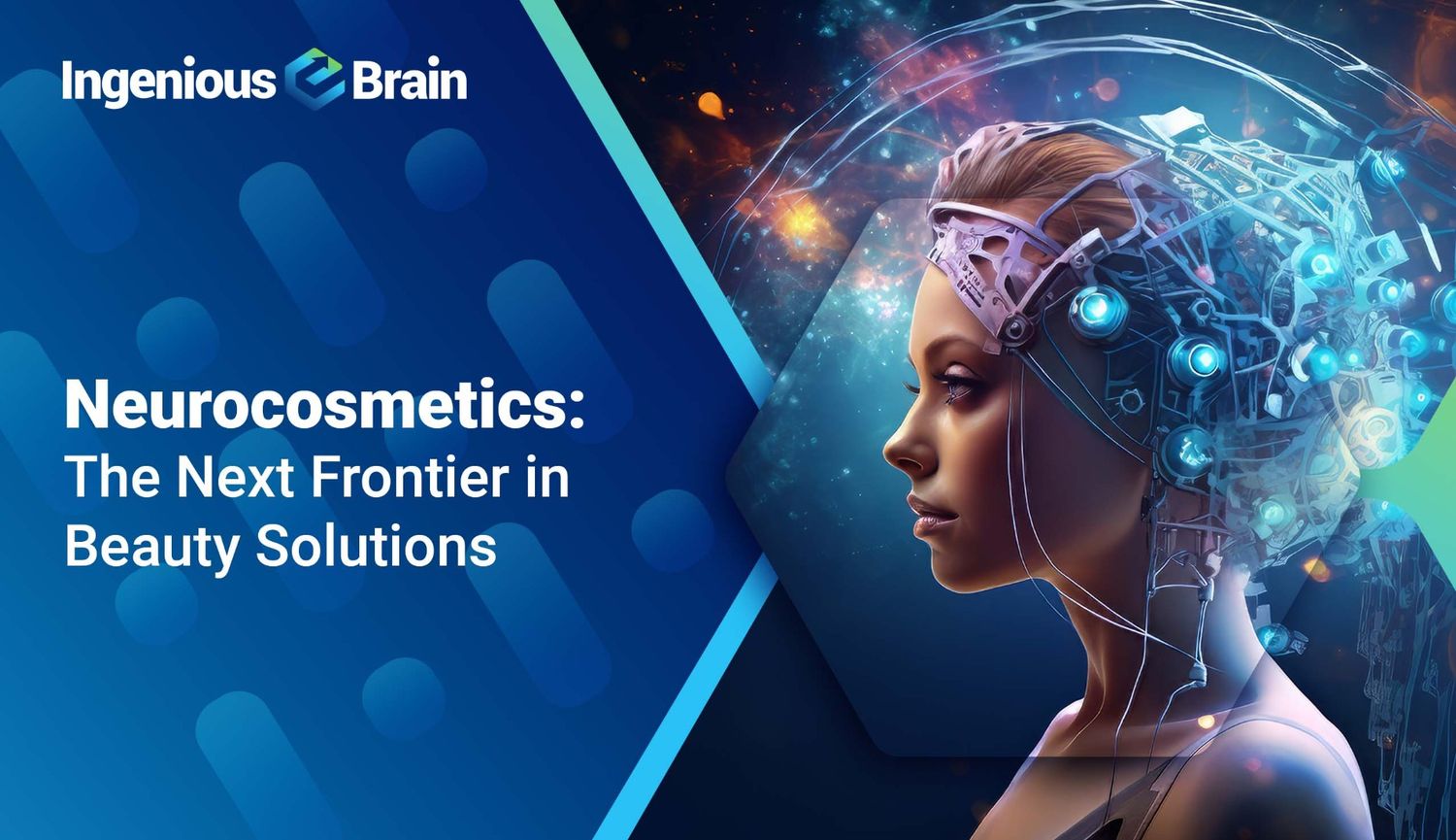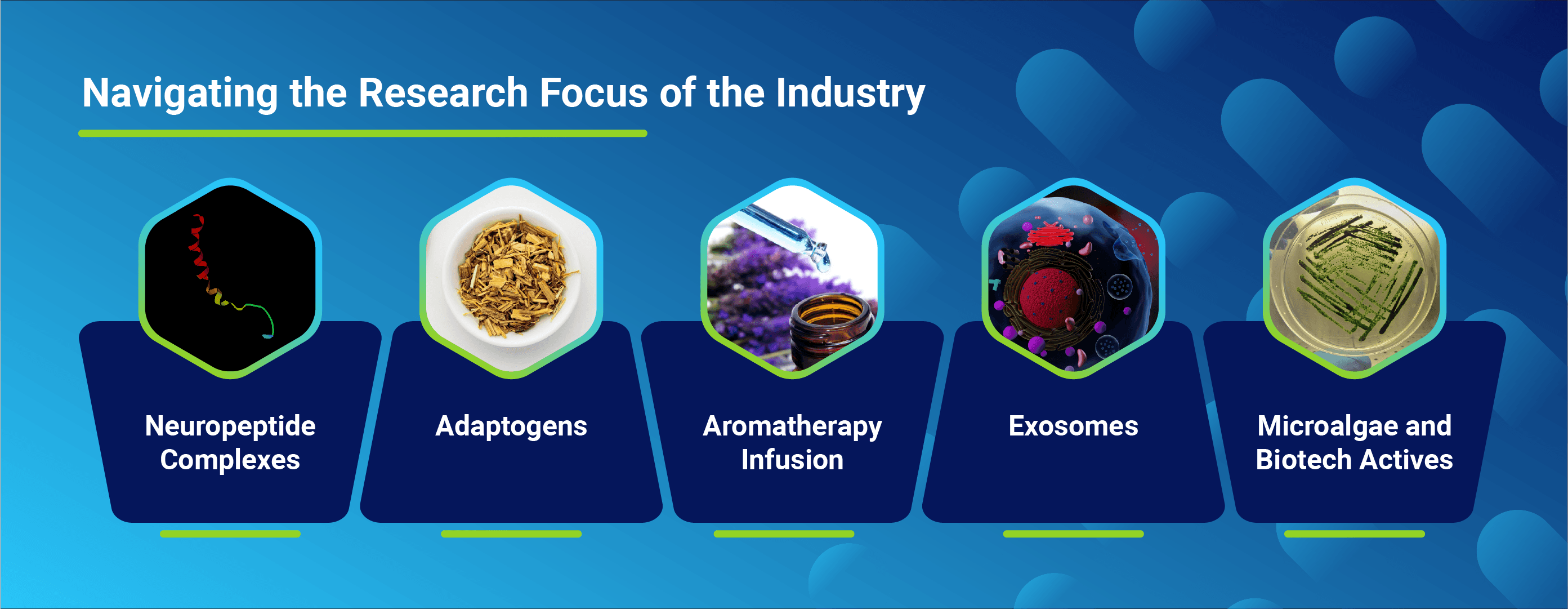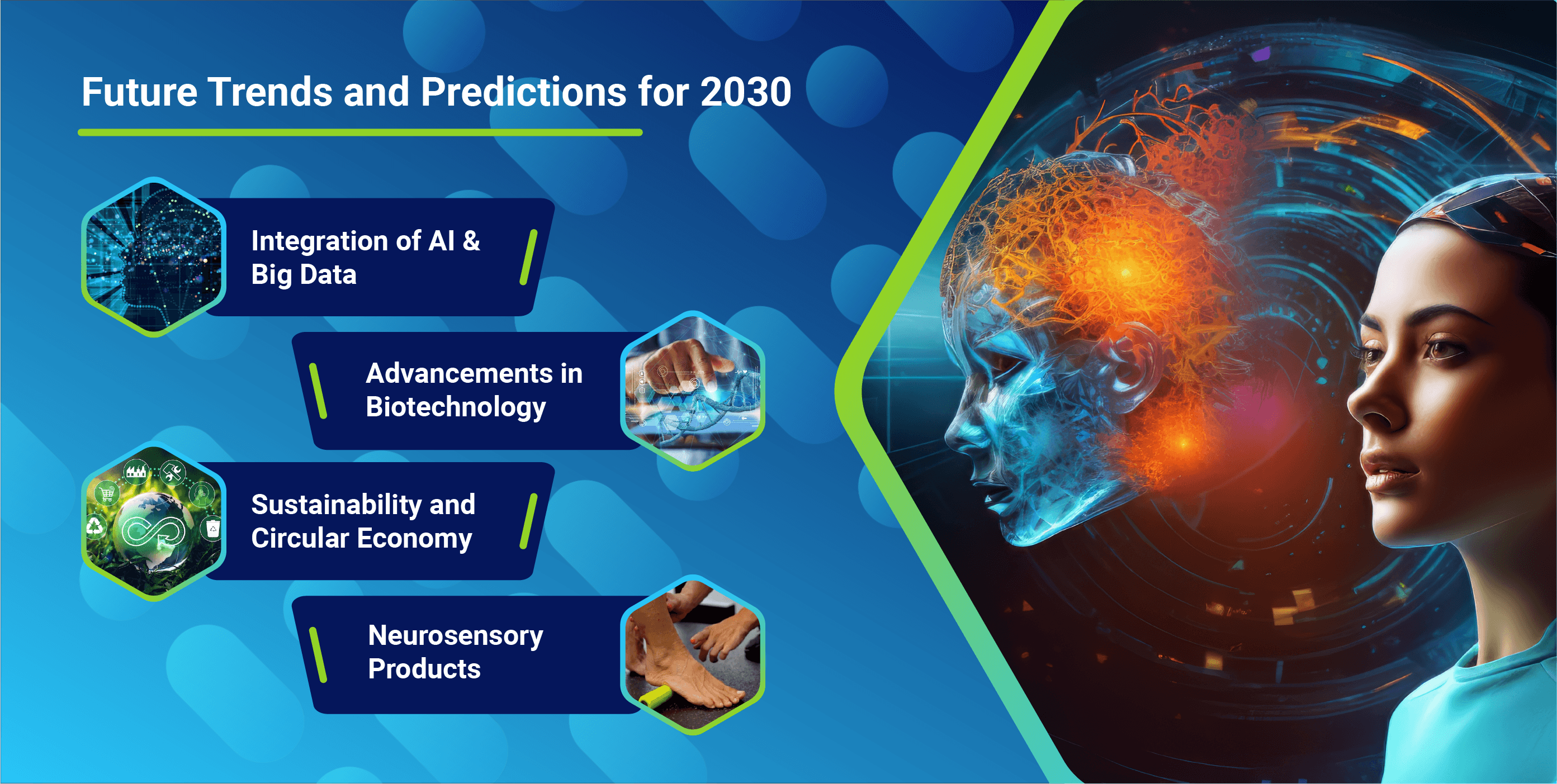Neurocosmetics: Transforming Beauty Through the Power of Neuroscience
Introduction
Neurocosmetics, a unique and innovative field that fuses neuroscience and skincare, is not just poised but ready to revolutionize the beauty industry. This blog delves into the current landscape of neurocosmetics, showcasing significant breakthroughs, potential opportunities, and future trends projected by 2030. At Ingenious e-Brain, we predict that by 2030, neurocosmetics will redefine the beauty industry, merging cutting-edge neuroscience with skincare to deliver tailored, highly efficient solutions. This burgeoning sector is set to harness neuroactive ingredients that interact with the nervous system to enhance skin health and appearance. Anticipated innovations will encompass products that not only tackle conventional issues like aging and hydration but also combat stress-induced skin conditions by modulating neural pathways. We foresee substantial growth propelled by consumer demand for scientifically proven, holistic beauty solutions, coupled with advancements in neuroimaging and biotechnologies that will facilitate precise customization.
Navigating the research focus of the industry
Neurocosmetics leverage formulations that interact with the nervous system through the skin, impacting neuromediators and sensory receptors. Here are key innovations reshaping this domain:
1. Neuropeptide Complexes
Neuropeptides, such as acetyl hexapeptide-8, mimic the effects of botulinum toxin by inhibiting neurotransmitter release, which reduces muscle contractions and smooths wrinkles. These complexes are celebrated for their non-invasive anti-aging properties. For example, Argireline, a well-known neuropeptide, is used in various anti-aging creams to reduce the appearance of fine lines and wrinkles around the eyes and forehead.
2. Adaptogens
Adaptogenic botanicals, including Rhodiola rosea and ashwagandha, help the skin adapt to stress and environmental changes. These ingredients enhance the skin’s resilience and ability to maintain homeostasis under stress. By modulating the skin’s response to external stimuli, adaptogens can reduce signs of fatigue and stress-related skin aging, contributing to a more youthful appearance.
3. Aromatherapy Infusion
Essential oils like lavender, chamomile, and bergamot are incorporated into skincare products for their calming effects. These oils provide a pleasant sensory experience, influence mood, and reduce stress levels. Integrating aromatherapy in neurocosmetics aims to create a holistic skincare experience that benefits both the skin and the mind.
4. Exosomes
Exosomes are nanoscale vesicles that facilitate intercellular communication by carrying proteins, lipids, and genetic material. In skin care, exosomes derived from stem cells can stimulate collagen production, enhance skin elasticity, and promote overall skin rejuvenation. Products utilizing exosome technology can help accelerate skin repair and improve skin texture and tone.
5. Microalgae and Biotech Actives
Biotechnologically derived ingredients, such as Givaudan’s Sensityl from microalgae, interact with the skin’s microbiome to improve mood and skin condition. These ingredients address skin health and emotional well-being by modulating inflammatory pathways and supporting the skin’s natural defenses. Similarly, Greentech’s ExpoZen targets neurosensory dysfunctions, providing soothing effects and protecting the skin from environmental stressors.
Opportunities and Addressing Unmet Needs
Neurocosmetics present significant opportunities to address various unmet needs in the skincare industry:
1. Holistic Wellness
The integration of neurocosmetic principles meets the rising consumer demand for products that enhance both appearance and mental well-being. Consumers are increasingly seeking products that improve skin health and contribute to overall wellness. This holistic approach addresses the interconnectedness of physical and emotional health, offering a comprehensive skincare solution.
2. Personalized Skincare
Advances in artificial intelligence (AI) and biotechnology enable the creation of personalized skincare solutions. AI-driven tools can analyze individual skin conditions, genetic profiles, and environmental factors to formulate tailored products. This level of customization enhances product effectiveness and consumer satisfaction as skincare regimens become more precisely aligned with individual needs.
3. Innovative Ingredients
Continued research into neuroactive ingredients promises new products with unique benefits. For instance, plant-derived neuropeptides and advanced biotech actives can target specific skin concerns while improving mood and overall well-being. Ingredients like sirtuins, which are enzymes that help repair cell damage, are being incorporated into new formulations to boost collagen production and promote cellular renewal.
Future Trends and Predictions for 2030
Several forecast that the following trends are poised to shape the future of neurocosmetics by 2030:
1. Integration of AI and Big Data
AI will revolutionize neurocosmetics by enabling highly personalized product formulations based on comprehensive data analysis. AI algorithms will assess skin types, environmental influences, and consumer preferences to create bespoke skincare solutions. This data-driven approach will enhance the precision and effectiveness of neurocosmetic products, offering consumers personalized regimens tailored to their unique skin conditions and lifestyle factors.
2. Advancements in Biotechnology
Innovations in biotechnology will introduce new neuroactive ingredients and sophisticated delivery systems. These advancements will enhance product efficacy, offering targeted treatments for various skin conditions and improving the sensory experience. For example, biotech-derived peptides and proteins will be used to create formulations that can penetrate deeper into the skin, delivering active ingredients directly to where they are needed most.
3. Sustainability and Circular Economy
The industry will increasingly focus on sustainable and ethically sourced ingredients, reflecting global consumer values and regulatory demands. Eco-friendly practices and transparency in ingredient sourcing will become essential aspects of neurocosmetic products. Brands will prioritize sustainability in their supply chains and product formulations, ensuring that their products are not only effective but also environmentally responsible.
4. Neurosensory Products
Products offering enhanced sensory experiences, such as prolonged warming or cooling effects, will be popular. These products will provide both functional benefits and emotional satisfaction, tapping into the growing demand for experiential skincare. For instance, ingredients that create a cooling sensation can soothe irritated skin, while those that provide a warming effect can enhance relaxation and reduce stress.
Conclusion
Neurocosmetics represents a transformative approach to skincare, merging beauty and wellness to meet consumers’ evolving needs. The industry is poised for significant growth with ongoing advancements in science and technology. By leveraging these innovations, companies can create products that enhance physical appearance and promote mental well-being, paving the way for a holistic approach to beauty and skincare by 2030.
At Ingenious e-Brain, we support you in navigating the complex landscape of neurocosmetics. We can track all the innovations happening across the globe, understand the unmet needs and challenges that still need to be addressed, and strategically prepare a new product development roadmap based on a blue ocean strategy by identifying white spaces or weak signals. We can provide insights on how to enter the market, support you with ingredients landscape and partner identification and assessment, and conduct opportunity assessments to help you build diamond strategies. With our expertise, you can feel confident and secure in your journey into the world of neurocosmetics.




